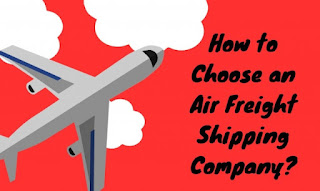List of Do’s and Don’ts for E-commerce Shipping
The size of the global e-commerce logistics industry was forecast to be USD 267.35 billion in 2021, and the market share is expected to reach USD 1328.5 billion by 2030, according to a study analysis published by Spherical Insights & Consulting.
One of the biggest challenges merchants faces while running an e-commerce firm is logistics. It's difficult to get your products through reliable supply networks to a vast market within the proper time frame. Therefore, knowing what and what not to do in e-commerce shipping is crucial.
The Dos of E-commerce Shipping
Before selecting a logistics partner, compare shipping prices.
You can compare pricing before shipping an order if your logistics provider gives you access to several courier partners. This will not only lower your logistics costs but will also give your clients an accurate estimate if you decide to charge them for shipping.
Offer Cash on Delivery as a payment choice.
You must provide a cash-on-delivery alternative to customers so they may conveniently pay for their orders. For those who are unfamiliar or uneasy about conducting digital transactions, it provides a sense of comfort.
Go for Automation
Because shipping and logistics are difficult and time-consuming operations, automation is needed to improve productivity and efficiency. Make sure a logistics supplier has tech-enabled shipping solutions to streamline the order fulfillment process before you sign a contract with them.
Through their multiple top courier partners, including Delhivery, Blue Dart, FedEx, and others, shipping aggregators like NimbusPost offer e-commerce firms in domestic and international markets a highly integrated, AI-enabled shipping platform. Additionally, they offer fraud prevention systems that make use of AI and machine learning.
Provide a variety of shipping choices for e-commerce
When making an online purchase, each customer has a different expectation for delivery. It is therefore vital for you to give customers a variety of shipping options. For instance, e-commerce tech giants like Amazon offer monthly memberships for speedy delivery choices to their prime customers.
Always share details about your deliverable service area.
Giving your consumers as much information as possible about your service region and deliverable pin codes is essential. . It requires telling them that you can deliver the products right to their door. You can do this by providing them with a list of your acceptable pin codes.
ALSO READ: The Best Courier Aggregator Companies for Online Businesses in India
The Don'ts of E-commerce Shipping
Avoid creating accounts on multiple courier platforms.
Never attempt to sign up for several courier services at the same time, unless and until they are made available to you via an integrated platform. If you are planning to partner with different courier service providers, hire a logistics aggregator.
Don't charge unexpected shipping fees from your customers
If you are charging your customers for shipping, don't add the cost of shipping after the checkout process. Not only would this lead to abandoned carts, but it would also harm the reputation of your business. Provide reasonable shipping costs and inform your customers in advance.
Don't make promises you can't keep.
If your logistics operations cannot meet the customer's expectations for express delivery or same-day delivery, avoid promising these services to your shoppers.
Unless it is possible, avoid providing free shipping.
If you own a small business, offering free delivery to your customers more frequently may strain your finances and worsen your current financial situation. Always provide a shipping rate calculator and let them know about all the applied shipping fees.
Charge Nothing For Return Orders
Your customers may feel more at ease if you offer free return options. Search for a courier partner with the lowest return fees because it might not be a good idea to charge them for returns.
Conclusion
It's possible to make your brand stand out among those of your competitors in the market by excelling in client expectations and recognizing their needs and demands. Developing reliable shipping operations and outsourcing them to a third-party logistics supplier is therefore always crucial (3PL).
Read More......


Comments
Post a Comment